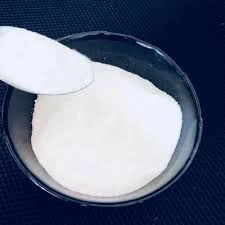
Oct . 02, 2024 14:34 Back to list
Safety Guidelines for HPMC Handling and Usage in Industrial Applications
Understanding HPMC Safety A Comprehensive Overview
Hydroxypropyl Methylcellulose (HPMC) has gained significant popularity in various industries, including pharmaceuticals, food, and construction, due to its unique properties and versatility. However, with its widespread use comes the necessity to understand and assess its safety measures and potential impacts on health and the environment. This article provides a comprehensive overview of HPMC safety, addressing its applications, regulatory standards, and safety considerations.
Understanding HPMC Safety A Comprehensive Overview
One of the primary concerns when evaluating the safety of HPMC is its biocompatibility, especially in pharmaceutical applications. HPMC is widely used as an excipient in drug formulations, and extensive research indicates that it is generally recognized as safe (GRAS) when used appropriately. The FDA and similar regulatory bodies around the world have provided guidelines that dictate acceptable concentrations and conditions for HPMC use in pharmaceuticals and food products. These regulations help ensure that consumers are not exposed to harmful levels of any additive, including HPMC.
hpmc safety

Additionally, studies on the potential toxicity of HPMC have shown that it does not pose significant risks when used as intended. The polymer is non-toxic, non-irritating, and does not cause adverse reactions when ingested in reasonable amounts. It is also important to note that HPMC is not known to produce carcinogenic effects, which adds to its profile as a safer alternative compared to many synthetic additives.
Environmental safety is another critical aspect of HPMC's application. As a biodegradable polymer, HPMC can break down in the environment, reducing long-term ecological impact. Unlike some synthetic polymers that contribute significantly to pollution and waste, HPMC's degradability presents a more environmentally friendly option, particularly in industries aiming for sustainable practices.
However, users and manufacturers must still take precautions when handling HPMC. Although it is considered safe, inhalation of HPMC dust can pose respiratory risks. Proper handling protocols, including the use of masks and protective equipment, should be observed to prevent inhalation exposure, especially in manufacturing settings where HPMC is being processed into powders.
In summary, HPMC stands out as a highly effective and versatile polymer with a robust safety profile. Regulatory frameworks and scientific research underline its safety in pharmaceuticals and food applications, confirming its biocompatibility and non-toxic characteristics. Additionally, its biodegradable nature contributes to more sustainable manufacturing processes. Nevertheless, awareness of safe handling practices is crucial for manufacturers and consumers alike. By ensuring proper usage and adherence to safety guidelines, the benefits of HPMC can be harnessed without compromising health or environmental safety. As our understanding of material safety evolves, continuous research and monitoring will remain essential to uphold the integrity and safety of HPMC applications across all industries.
-
Versatile Hpmc Uses in Different Industries
NewsJun.19,2025
-
Redispersible Powder's Role in Enhancing Durability of Construction Products
NewsJun.19,2025
-
Hydroxyethyl Cellulose Applications Driving Green Industrial Processes
NewsJun.19,2025
-
Exploring Different Redispersible Polymer Powder
NewsJun.19,2025
-
Choosing the Right Mortar Bonding Agent
NewsJun.19,2025
-
Applications and Significance of China Hpmc in Modern Industries
NewsJun.19,2025







